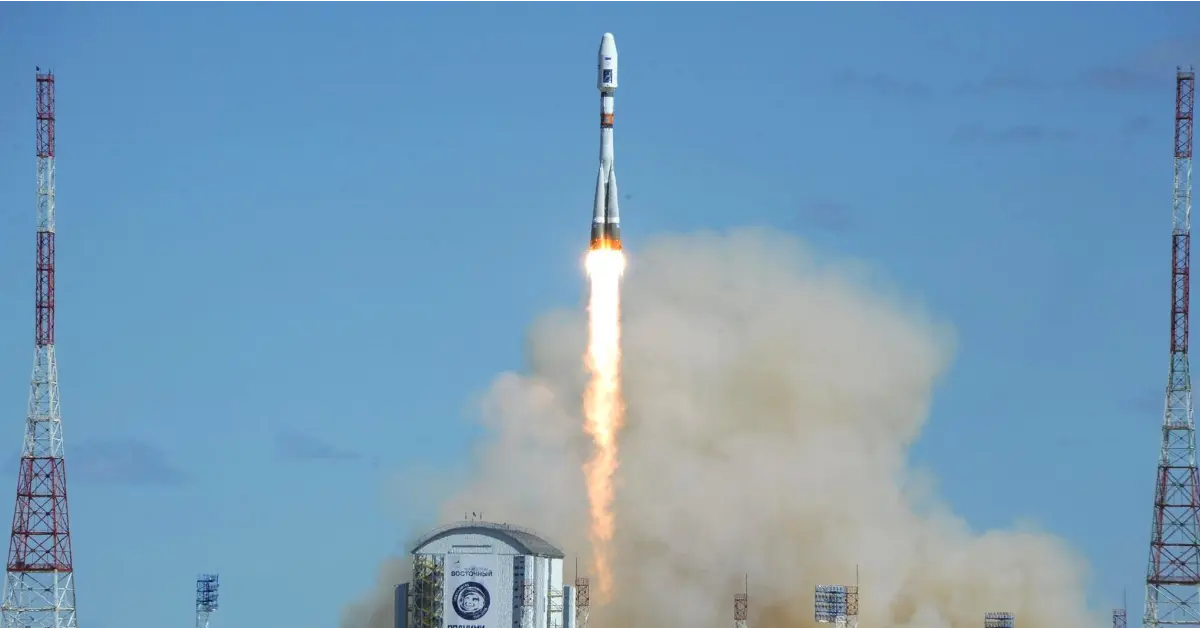In a surprising turn of events, Russia’s highly anticipated lunar mission, the Luna-25 automatic interplanetary station, has encountered a tragic end as it collided with its destination—the Moon itself. The setback marks a significant disappointment for the Russian space agency Roscosmos and casts a shadow over their ambitions for lunar exploration.
Launched with great fanfare on August 11, the Luna-25 spacecraft embarked on its journey to the Moon aboard a Soyuz 2.1b rocket from the Vostochny Cosmodrome in Russia’s Far East. The mission was replete with promise, with scientists and space enthusiasts around the world eagerly awaiting the crucial insights the spacecraft was expected to provide.
After successfully entering lunar orbit earlier in the week, Luna-25 commenced its mission with vigor, capturing and transmitting high-resolution images of the enigmatic dark side of the Moon. These images not only captured the attention of the scientific community but also sparked widespread public interest and engagement.
The culmination of the mission was set to occur on or around August 21, with the eagerly awaited landing of the spacecraft onto the Moon’s surface. The primary objective of the mission was to analyze the lunar soil for traces of ice—a discovery that would have monumental implications for future lunar exploration and habitation efforts. However, fate had other plans, and Luna-25 spacecraft met an unforeseen and untimely demise.
The loss of Luna-25 is not just a setback for Roscosmos but also serves as a poignant reminder of the immense challenges that space exploration entails. The collision of the spacecraft with the Moon underscores the unpredictability of space missions and the myriad factors that can lead to mission failure, despite meticulous planning and rigorous testing.
Roscosmos had envisioned Luna-25 as a pioneering step towards a broader lunar exploration agenda. Beyond its primary goal of ice detection, the mission also aimed to test soft-landing technology—a crucial capability for any future lunar landings. Moreover, the spacecraft was intended to facilitate long-term research into the lunar exosphere and the upper layer of the south pole’s surface, unraveling the mysteries of the Moon’s geology and atmosphere.
The unexpected loss of Luna-25 spacecraft prompts a moment of introspection for the global space community. While setbacks are an inherent part of any scientific endeavor, they also present valuable learning opportunities. The data and insights gleaned from the mission’s brief operational phase, including the high-resolution images captured, could still contribute to our understanding of the Moon’s topography and composition.
As we grapple with this setback, it’s important to remember that the pursuit of space exploration is not devoid of risks. It’s a testament to human determination that setbacks like these do not dissuade us from pushing the boundaries of our understanding and capabilities. With every mission, successes and failures alike, we inch closer to realizing the full potential of human space exploration.
The loss of Luna-25 will undoubtedly prompt a reevaluation of future lunar missions and the measures taken to ensure their success. As scientists, engineers, and space agencies around the world collectively mourn this unexpected end, they will also channel their grief into renewed dedication to overcoming the challenges that lie ahead.
In the grand tapestry of space exploration, Luna-25’s fate serves as a somber thread, a reminder that the universe remains an enigmatic realm that demands respect, caution, and the unwavering spirit of discovery. As we honor the memory of this mission, we also look forward to the day when humanity’s aspirations for the Moon and beyond will rise anew, undeterred by the hurdles that lie in wait.











